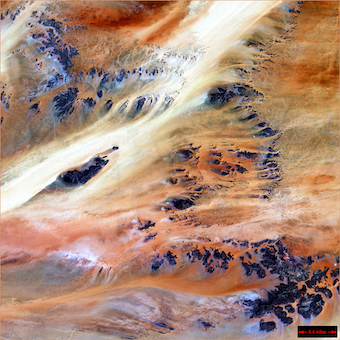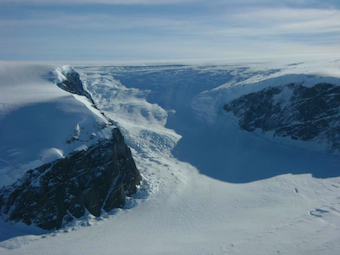5.4: Getting Ready for Chapter 5
- Page ID
- 15898
Chapter 4, "Energy and Radiation" is one of the most important chapters of this book. In it we discovered that the energy received from the Sun drives many of the environmental processes acting at the surface of the Earth. As we look ahead to chapter 5, "Air Temperature" and beyond we'll see how important this material is. The absorption of longwave radiation and and the transfer of sensible heat affect the temperature of the air. When water changes phases it gains or loses latent heat, affecting the temperature of the surrounding environment.


The geography of air temperature and what controls it is the subject of chapter 5. In chapter 5 we'll examine horizontal and vertical variations in air temperature that will be important in explaining atmospheric and geomorphic processes. For instance, differences in temperature over distance affects air pressure and in turn determines how hard the wind blows. Wind erodes precious top soil, arranges sand into beautiful dunes of various shapes, and creates waves that sculpt coastlines. We'll conclude the chapter by looking at future patterns of air temperature resulting form global warming.
What you should already know ...
Before beginning you should be comfortable with the material covered in Chapter 2 The Earth System and Chapter 4 Energy and Radiation. You should have a good understanding of the controls over the distribution of insolation, longwave radiation, net radiation,sensible and latent heat transfer.
- Which of the following does not need an intervening medium to transfer energy?
- conduction
- convection.
- radiation
- all require an intervening medium
- The earth primarily emits ____ radiation while the sun primarily emits_ radiation.
- shortwave; shortwave
- shortwave; longwave
- longwave; shortwave
- longwave; longwave
- Clouds
- are good absorbers of shortwave radiation emitted by the sun.
- are good absorbers of longwave radiation emitted by the earth.
- are good absorbers of both longwave and shortwave radiation.
- are poor absorbers of both longwave and shortwave radiation.
- The troposphere
- usually exhibits an increase in temperature with an increase in altitude.
- has a normal lapse rate of 1C.
- is primarily heated by solar radiation.
- is primarily heated by energy emitted by the earth.
- The heat used to change the temperature of the air is called
- potential heat.
- sensible heat.
- latent heat.
- ground heat.
- A positive sensitive heat transfer means
- heat is transfer from the surface into water.
- heat is transferred from the surface downward into the subsurface.
- heat is transfer from the surface into the air.
- none of the above.
- The subsolar point on June 22 is
- 23.5 degrees S
- 0
- 66.5 degrees N
- 23.5 degrees N
- Net radiation for the year is greatest
- over tropical oceans.
- off the west coast of the United States
- over the Arctic ocean
- in the Sahara desert
- ____ heat is used in the evaporation process.
- Sensible
- Latent
- Ground
- Potential
- Insolation for the year is greatest
- over tropical oceans.
- off the west coast of the United States.
- over the Arctic ocean.
- in the Sahara desert.
- Answer
-
- C
- C
- B
- D
- B
- C
- D
- A
- B
- D
About your score ....
If you scored 80% or above, Great! ... start reading the chapter.
If you scored 70% to 80% you should consider reviewing the previous material.
If you scored less than 70% you should consider reviewing the previous material and seeking help from your instructor.


